- 1 Week trek
- Camping
- Fall Treks
- Jammu Kashmir
- Kashmir Valley Treks
- Moderate Grade Treks in Himalayas
- Monsoon Treks
Tarsar Marsar Trek:
Tarsar Marsar is a fascinating trek in the Kashmir valley that is gaining increasing attention from trekkers. Whether you take a break beside the secluded alpine lakes or walk along a pretty river, green meadows with wildflowers and wide swathes of green – makes this trail a special one during July and August.
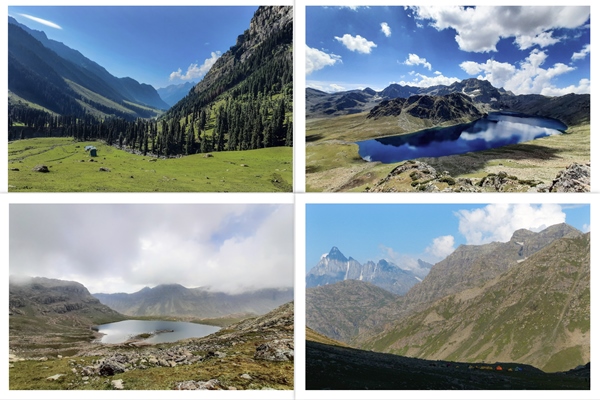
If you see the trail map below, our trek base camp is Aru, one of the upper valleys ahead of the famous Pahalgam town. From here, we will follow the picture perfect Lidder River for a day along cedar and conifer forests to camp at Lidderwat, one of the most beautiful campsites in Kashmir. This place is a broad opening in the valley and the confluence of two streams, one coming from Tarsar and the other from Kolahoi glacier, to form the Lidder River. Henceforth, we will get into the one-side valley that leads us to Tarsar through the meadows of Sekhwas.
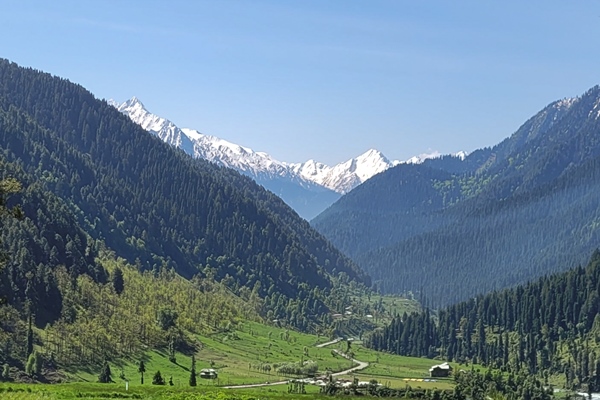

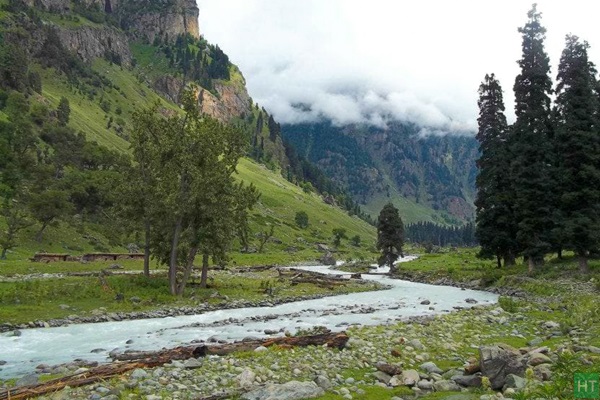


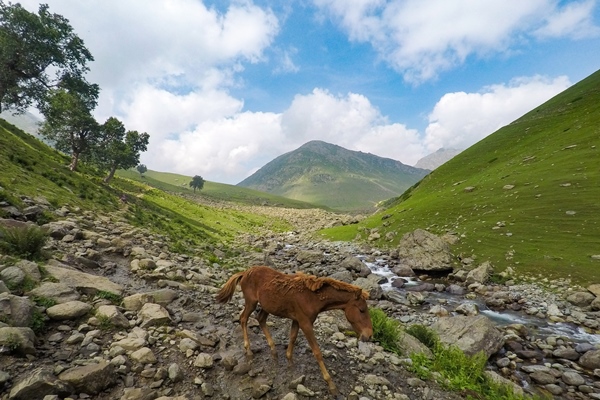

Brief Itinerary:
Day 1: Start from Srinagar (or airport) latest by noon and drive to Aru (~ 2440 m/8000 ft) via Pahalgam – 110 Km – 4 hours. Twin sharing tent accommodation.
Day 2: Trek from Aru to Lidderwat (~ 2800 m/9180 ft) – 10 Km – 5/6 hours. Camp.
Day 3: Trek from Lidderwat to Shekwas camping ground (~3380 m/11100 ft) – 6 Km – 4/5 hours.
Day 4: Trek from Shekwas to Tarsar lake (~ 3800 m/12465 ft) – 5 Km – 4 hours. Explore around. Camp.
Day 5: Trek from Tarsar to Sundersar (~ 3950 m/12950 ft) via Sonamous/Tarsar Pass (~ 4000 m/13120 ft) – 5 Km – 3/4 hours. Camp. Visit Marsar lake (~ 3960 m/13000 ft) in the afternoon and return to camp (2 hours).
Day 6: Trek down to Lidderwat (~ 2800 m/9180 ft) via Shekwas – 14 Km – 6 to 7 hours. Camp
Day 7: Lidderwat to Aru (~ 2440 m/8000 ft) – 10 Km – 4 hours – Drive to Srinagar – 110 Km – 4 hours. You will reach Srinagar city by 8 pm. Accommodation on your own.
Day 8: Fly out of Srinagar
Important Notes on itinerary:
Carefully read the following points so that you can arrange your tickets and understand the estimated additional expenses outside the TREK FEE.
- You need to reach the latest by 12 noon on Day 1 in Srinagar. After the trek you will return to Srinagar on Day 7 by 8 pm. Arrange your tickets, and stay in Srinagar accordingly.
- We will arrange a shared transportation from Srinagar (from the airport or city centre, TRC) to basecamp Aru and return, The fare is ₹ 5000 one way (Tata Sumo, 5 to 6 sharing). You pay the driver directly, sharing equally with the other team members. Or else you may reach independently to Aru.
- Cost of Mandatory reserve day, i.e. Day 8 is NOT included in the TREK FEE. If we use this during trekking, you need to pay an additional ₹ 2500 per person. This will be collected at Aru.
- If we don’t use the reserve day then you will be back to Srinagar on Day 7 evening. You may take a Shikara ride on Dal Lake, houseboat stay etc in Srinagar.
- Note that prepaid sim cards do not work in Kashmir.
Tarsar Marsar trek map:
Here is a 3D satellite view of the Tarsar Marsar trail.

Distance & Altitude profile of the trail:
Below is an indicative profile of the trekking trail. This will give you an idea of the relative gradient (steepness of ascent or descent) of the trekking trail from one campsite to another. Note that you will get more undulations (ups and downs) on the actual trail.

Is this trek suitable for beginners?
Yes, as a first timer you can comfortably complete this trek, provided:
- You are living a healthy and active lifestyle.
- Have a decent amount of physical fitness to endure 5/6 hours of hiking everyday with your backpack. Do check the guidelines to prepare and improve your fitness for treks so that you are comfortable on the trail.
- Proper guidance and logistical support for the trek.
- Assistance with some personal clothing and gear.
The trail reaches a highest point just above 13000 ft which is not very high considering the Himalayas. But if you have struggled to acclimatise in any of your prior high altitude tours (e.g. Rohtang Pass, Leh/Ladakh or Lahaul/Spiti etc.) then you need to be careful. Do consult with us @ 9836133166/9831112469 or shoot an email to info@dev.himalayatrekker.com.
What is the best season for Tarsar Marsar trek? What would the weather be like?
Season time for Tarsar Marsar trek is between late June to late September. The main essence of Kashmir valley, the gushing brooks, verdant meadows with wildflowers are best viewed during July and August.
After mid September green meadows will change to yellowish. From October as the autumn sets in, the weather will be cold. You will see some autumn foliage in giant Chinar trees, which is a cousin of Maple.
Now let us look at some weather data for the Pahalgam area. Our trek starts 10 Km further up and through the upper valleys of Pahalgam. As a result temperatures will be less and so will the rain in general.

As you can see from the above chart temperature remains on the warmer side of the scale and it is conducive for trekking between July to September. Tarsar and Sundersar camps are our higher camps, so these places will be coldest in the course of your hike.
Expect and prepare for a minimum temperature of 0° to 5°C at Tarsar or Sundersar campsites, with some windchill. Usually minimum temperature is attained late in the night/early morning time. At the same time it will be 5°-6°C warmer inside the tent than that of outside.
Will it be raining during Jul-Aug?
Technically there is no “monsoon wind” in Kashmir valley. As you can see from the above chart, main rainfall occurs between January to April due to western disturbances. At the same time it does rain in July and August as well.
Expect some rains, rain showers, afternoon showers/thunderstorms usually not lasting more than an hour. This type of showers are common on mountains but rarely incessant daylong rains. Your trek is for 6 days, so expect rain on some of these days. So carrying a waterproof layer is a must for all.
What type of clothing should I bring for this trek?
It is important to carry proper clothing on this trek. Three layers of clothing are recommended at the campsite in the early morning or evening while you are outside your tent.
- Base layer (moisture-wicking layer; use synthetic and avoid cotton): A quick-dry base layer (dry-fit t-shirt, half or full sleeves) & trekking pants (synthetic, preferably quick-dry, and some wind- or water-proof material is useful)
- Mid layer (warm clothing): Usually a warm jacket (synthetic, hollow fibre, fleece, or down jacket, etc.), but you may use combinations of layers as well (e.g., a light jacket + hoodies + a sweater or a thermal, which you may already have with you).
- Outer layer (weatherproofing): a windproof and waterproof jacket with a hood is best, or a poncho or raincoat.
Note that we don’t have any gear renting facilities, although at some bases, you may get a few on the spot. You may read our opinion on whether should you buy or rent your trekking gear to get a broader understanding.
Check a comprehensive List of things to carry in a himalayan trek or download the PDF. Also read how to choose right trekking gear before purchasing any gear.
How to reach trek basecamp (Aru near Pahalgam):
Our trek basecamp Aru is an offbeat tourist destination 10 Km ahead of famous Pahalgam. It takes between 3 to 4 hours to reach Aru from Srinagar covering around 110 Km distance. Trek’s end point is also Aru. Here is the road map to reach basecamp and the surroundings to give a broad idea of your destination.

We will arrange a car pick up from the Srinagar airport to basecamp Aru and return to Srinagar. A Toyota Innova charges ₹ 4500 one way (4 to 5 people can seat), one way. You pay directly to the driver sharing equally.
Most convenient way to reach Srinagar is via flight. Sheikh Ul-Alam International Airport in Srinagar (Code: SXR) is around 10 Km away from the city centre.
Otherwise, the nearest railway station is in Jammu (Station Code: JAT) and it takes around 10 hours to reach Srinagar, covering ~ 280 Km.
COVID Update and guidelines 2022:
1) Carry either a fully vaccinated certificate or a RT-PCR negative test report not older than 72 hours.
2) General COVID social distancing and hygiene are to be followed in the lodge/homestay/hotel, especially in the common areas. Carrying masks and sanitisers are a must.
Why treks with HT?
| Duration | 8D/7N |
|---|---|
| Grade | Moderate |
| Physicality | 6/10 |
| Highest Point | 4000 m/ 13120 ft |
| Trail Length | 50 Km |
| Expertise: | 12 years of on ground experiences |
| Support staff: | Qualified local & office staff |
| Group size: | Small groups up to 15 |
| Insurance: | Travel insured trek and tour itinerary |
| Easy Bookings: | 25% Booking Deposit |

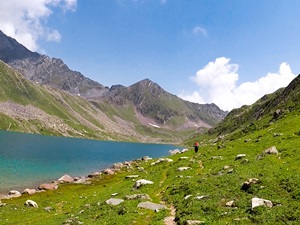
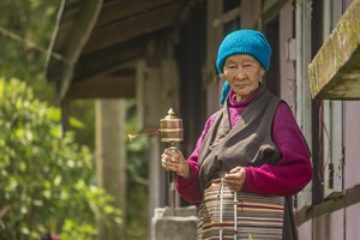
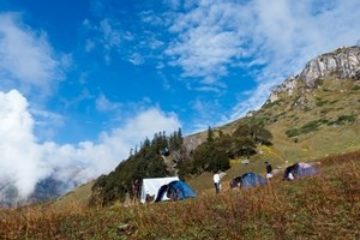
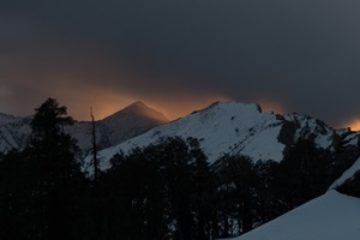
Tour Reviews
There are no reviews yet.
Leave a Review